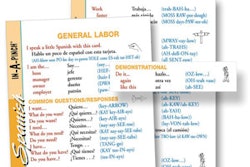If you and your managers are doing your job right, you will be having regular "one-on-one's" with your key performers, part of which will cover their general job satisfaction and overall "engagement" with the organization.
Sometimes however, general busy-ness, or simply a lack of understanding of how to have such a conversation, means that managers fail to have such discussions, leading to the type of unpleasant surprise that no-one likes to get.
Note: It's often the very lack of such conversations between a manager and employee that builds (or at least stokes) the very frustration that ultimately causes the key performer to leave - a real case of a "double whammy."
Here's How to Stop the Surprises
Use this simple Employee Retention Risk Analysis ("ERRA") process to help prompt your managers to regularly assess the "retention risk" of key performers, and report back to you regularly - I suggest you get them to complete this at least quarterly.
An important secondary benefit of completing this exercise is that it gives a structured environment for your managers to actually have this conversation with you - you'd be surprised the number of business owners who believe their "open-door" policy means that managers will come in and talk about matters such as retention risk of key employees.
Rank Your Key Employees

The first step in the Retention Risk Analysis is pretty simple - the manager ranks the individual according to two criteria - their ability to get results, and their overall integration - sense of 'fit' - in the organization as a whole.
Note that we're not asking for granular data here - just an overall sense of where the employee fits overall.

Quadrant 1
Employees in Quadrant 1 (low results / low integration) are clearly in need of some form of intervention if they are to become productive team members.
By completing the assessment above, you and their manager may come to the conclusion that little can be done to help this person, and you may start making alternative plans.

Quadrants 2 and 3
Employees in Quadrants 2 and 3 are those where we have a decision to make - they either perform well but don't align with the rest of the organization (Quadrant 2), or they fit in very well, but aren't producing the results (Quadrant 3).

Quadrant 4 Quadrant 4 employees are our stars - high performers who also align very well with our culture and goals. This is the area where we need to be most sensitive to retention risk.

It's important that you and the employee's manager take a realistic view of the retention risk of star performers and assess the steps necessary to ensure their retention.
You might even want to involve the employee themselves in the completion of this part of the ERRA form - nothing says you care more than consultation about their future with the organization.
Estimate the Retention Risk
Finally, have the managers complete a quarterly risk assessment, estimating the risk of losing key employees on a 1-10 scale (or any other scale you're comfortable with).

Sure, it's subjective, but guess what - you and your manager's 'feel' for the retention risk of individuals will greatly improve just by doing this exercise, and you'll have much richer discussions about each employee as a result.
Les McKeown is a writer, speaker, consultant and President & CEO of Predictable Success, an organizational development consulting firm based in Marblehead, MA. He is the author of Retaining Top Employees, The Complete Guide to Mentoring and Coaching and The Complete Guide to Orientation & Re-Orientation. Les also provides design and re-design employee retention strategies at Retention-Secrets.com.



















